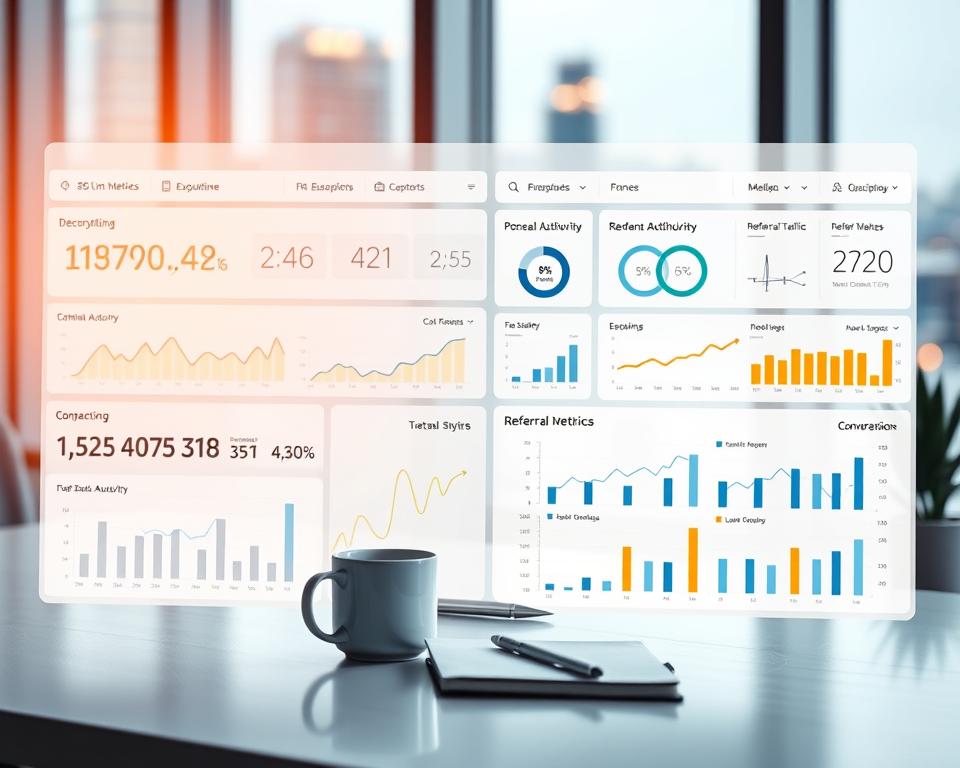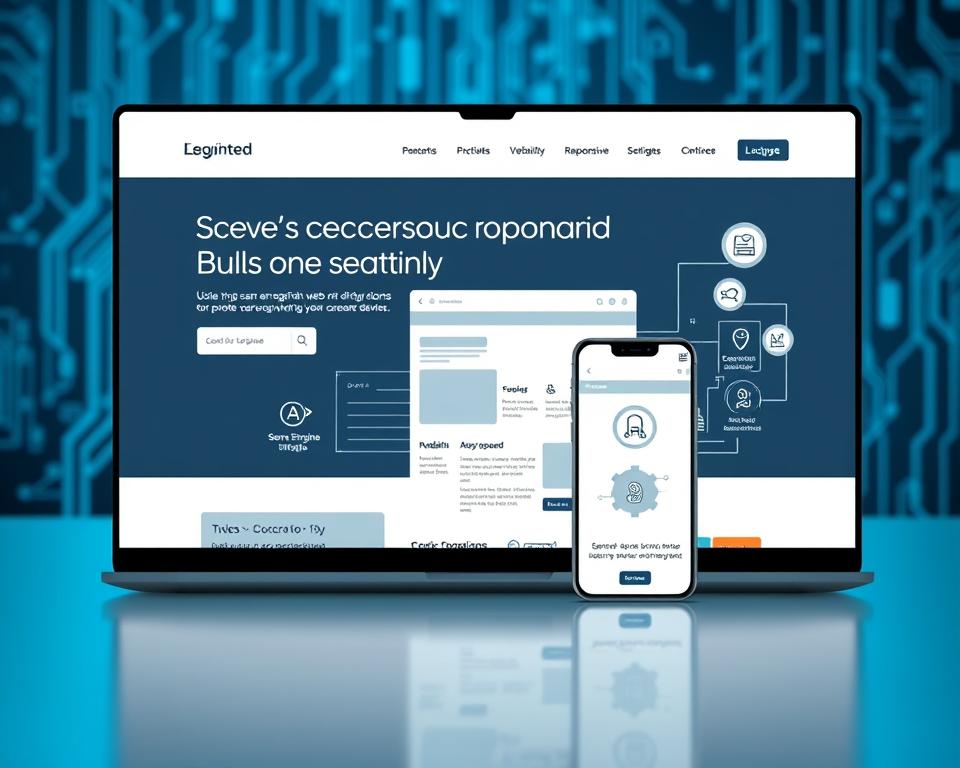The Transformation of Progression in Online Marketing: An Odyssey
Did you know that over 170 million people regularly use social media, effectively reshaping the advertising environment? As customers increasingly move online, online marketing has arisen as a essential strategy. It allows companies to connect customers on platforms where they spend a substantial part of their attention. This change signifies the development of digital marketing transitioning from conventional methods to a more engaging and involved approach.
With an approximate online advertising market worth of approximately two hundred billion dollars, it’s evident that New Braunfels Digital New Company must adapt to the current online marketing trends. This is vital to stay competitive in this fast-paced environment.
The growth of digital channels has empowered companies to target audiences that conventional advertising techniques struggle to target. Gone are the days when a simple advertisement in a periodical would be enough. Today, focused marketing approaches have taken center stage, using methods like search optimization, social networks, and influencer partnerships.
As we explore the evolution of digital marketing, we will delve into significant milestones and tendencies. These have molded the present advertising model. We will showcase the unique opportunities and difficulties encountered by companies in this digital age.
Main Points
- More than 170 million individuals actively engage on social media platforms, creating vast advertising opportunities.
- Online marketing proves to be cheaper than traditional methods, facilitating broader reach with reduced costs.
- The global digital advertising market is expected to reach $517 billion by the close of 2023.
- Targeted strategies like SEO boost web visibility and engagement for companies.
- Digital influencers have built a one billion dollar sector, changing brand promotion.
- Organizations utilizing mobile advertising strategies can tap into the growing consumer trust on mobile technology.
- Investing in online marketing tools, like Google AdWords, allows for precise targeting based on demographic data.
Introduction to Digital Marketing
Digital marketing covers a broad spectrum of advertising activities across various digital platforms. This encompasses social channels, email marketing, search platforms, and websites. It’s a vital element of modern marketing, due to the growing online engagement between audiences and brands. Organizations that grasp the essentials of digital marketing can create strategies that effectively interact with their intended audiences.
The progression of internet marketing is driven by evolving customer behaviors. The advent of mobile technology has revolutionized advertising and sales. Currently, businesses utilize multi-channel strategies to satisfy the needs of users who utilize multiple devices and platforms. Given the attention spans of millennials and Gen Z, content must be compelling and powerful from the start. Findings show that integrating videos can boost communication effectiveness by up to three hundred percent.
The growing role of digital marketing emphasizes the need to remain updated of emerging trends and technologies. Resources like AI-driven chatbots facilitate profound customer interaction, while social media influencers help build trust with customers. Traditional marketing methods are no longer enough, emphasizing the significance of integrated digital strategies that meet modern consumer demands.
| Factor | Description |
|---|---|
| Consumer Behavior | Move towards digital engagement, shorter attention spans (12 seconds for young adults, eight seconds for Gen Z) |
| Tech Usage | Rise of smartphones, expansion of engaging technologies |
| Advertising Strategies | Concentration on omni-channel and influencer marketing |
| Interaction Tools | Utilizing AI-powered chatbots and video content in marketing campaigns |
| Industry Evolution | Expansion of digital advertising since 2000, introduction of PPC advertising with platforms such as Google AdWords |
Defining Digital Marketing
Online marketing entails a array of approaches to connect with consumers through digital channels. It encompasses SEO strategies, content strategies, and social media engagement. The main aim is to effectively connect with and interact with target audiences using large datasets and cutting-edge technologies.
The increase of internet advertising has been substantial in the last few years. As businesses dig deeper into the online world, the requirement for effective online marketing tools increases. For example, 53% of all web traffic comes from natural search results, highlighting SEO’s role in boosting visibility and website traffic.
Content marketing innovations are essential to a brand’s communication with potential customers. The content marketing industry is projected to reach two trillion dollars by 2032. It’s crucial for companies to adapt their strategies to successfully leverage these efforts. Compelling content fosters connections, boosting brand allegiance and recognition.
Moreover, the significance of comprehensive CRM tools has increased. Companies that utilize customer insights can develop focused marketing campaigns. This leads to improved engagement and sales conversions.
In conclusion, online marketing is a evolving driver for businesses aiming to enhance their digital presence. By utilizing the most recent in digital advertising and innovative content marketing, businesses can increase brand visibility and achieve greater consumer engagement.
Progression of Digital Marketing
The marketing landscape has experienced a significant shift over the time. The progression of digital marketing illustrates how the online world has altered business communication with audiences. As classic techniques became outdated, online platforms surfaced, presenting new ways to interact with consumers and track outcomes.
From Traditional to Digital: A Major Shift
The move from traditional to digital marketing has significantly altered the advertising industry. Traditional methods like print media, radio media, and TV offered limited interaction. Digital advertising, however though, allows live interaction and analytics. The initial clickable banner advertisement in 1994 marked the beginning of online marketing as we understand it today.
This change allowed businesses to experiment and improve their methods, utilizing the online world to interact with consumers.
The Dawn of the Internet and Digital Marketing
The rise of the internet introduced a new marketing era. Initially, organizations developed sites, preparing the foundation for internet marketing. The late 1990s witnessed the growth of search tools like Yahoo and Alta Vista, highlighting the need for SEO in digital marketing.
This transition opened new avenues for targeting audiences actively searching for products and services, drastically altering consumer-brand interactions.
| Timeline | Key Event | Impact on Digital Marketing |
|---|---|---|
| 1994 | First interactive banner ad on HotWired.com | Beginning of online advertising |
| 1998 | Growth in search engine usage | SEO’s emergence as a marketing tool |
| 2002 | Google introduces AdWords | Revolutionized online advertising with PPC |
| 2004 | Facebook launched | Created extensive engagement opportunities |
| 2007 | Introduction of the iPhone | Led to the rise of mobile marketing |
| 2012 | Content marketing gains recognition | High-quality and pertinent content becomes essential |
1990s: The Beginning of Digital Marketing
The Nineties were a groundbreaking time for advertising, preparing the foundation for today’s digital world. The initial website was launched in 1991 by Tim Berners-Lee, indicating a crucial transformation in brand-audience connections. Search engines became vital for navigating the increasing online environment.
Major Milestones of the 1990s
Several key moments defined the 1990s, establishing the foundation for the future of digital marketing:
- 1991: The launch of the inaugural website ignited a surge in interest in digital content.
- 1994: The launch of the first clickable banner ad paved the way to online advertising.
- Early search engines like Archie search surfaced, providing online users a method to locate online information.
- Platforms like Yahoo Search rose, heavily impacting the internet user experience.
The Impact of Search Engines
The 1990s witnessed a profound influence from search tools. As businesses realized the value of digital visibility, SEO became vital. Brands adapted to search engine changes to increase their visibility to customers. This signified a shift from simple brand awareness to a focus on being visible and engaging, emphasizing the essential role of search engines in digital marketing.
The 2000s: SEO and Social Media Revolution
The 2000s experienced a significant shift in online marketing, powered by the increase in SEO and social platforms. Businesses focused on increasing their online visibility, resulting in a increase in SEO strategies. These changes altered how brands engage with customers and how marketing approaches developed.
Rise of Search Engine Optimization (SEO)
Businesses understood the value of search platforms as main information providers. SEO evolved into vital, with sites focusing on content and keyword optimization. The early 21st century initiated PPC advertising, expanding digital advertising alternatives. This laid the groundwork for sophisticated analytics and large-scale data in marketing.
The Emergence of Social Networks
Platforms like Facebook, Twitter, and LinkedIn became widely used mainstream, transforming social media. They empowered businesses to connect with users and deliver focused advertisements. The late two-thousands also experienced the rise of mobile marketing, with the growth of smartphones affecting strategies.
With over 170 million per day users, social media’s impact on brand visibility was huge. Marketers began collaborating with influencers, enhancing brand awareness and sales. Social media became a crucial part of modern digital marketing.
The Effect of Online Advertising Progress
The digital marketing landscape has gone through a significant change with the emergence of online advertising advancements. Programmatic advertising has revolutionized how brands communicate with their audience. In the U.S., more than 90% of digital display ads depend on programmatic methods for success. This innovation permits focused ad delivery, ensuring the appropriate message gets to the intended consumer.
Digital advertising trends show a increase in native advertising efficiency. This approach, blending ads into user experiences, often surpasses traditional methods in engagement. Additionally, utilizing mobile app advertising has become crucial, leveraging the viral capability of these platforms to increase visibility.
Augmented reality in content marketing is becoming more prevalent. It merges digital content with real-world environments, developing engaging experiences. Progressive web apps (PWAs) also emphasize user experience, highlighting speed and clarity, satisfying current consumer demands.
With almost 315 million Americans active on social media in 2023, mobile optimization is more critical than ever. A considerable portion of advertising budgets is assigned to mobile ads, recognizing the prolonged time users use their devices. This shift not only enhances user experience but also increases conversion rates, driving revenue growth.
The adoption of AI tools has substantially advanced online advertising. Tools like Albert allow predictive analysis for pay-per-click campaigns, aiding marketers improve strategies with real-time data. AI-driven automation improves marketing efficiency, permitting brands to stay competitive in a quickly transforming market.
- Automated advertising boosts targeting efficiency.
- Integrated advertising often exceeds traditional methods.
- Augmented reality creates engaging marketing experiences.
- Mobile advertising focuses on optimizing user experience.
- AI tools deliver predictive insights for campaigns.
Adapting to digital marketing trends guarantees brands maintain competitiveness in the continually shifting digital landscape.
2010s : Period of Personalization
The decade of 2010s experienced a significant shift in digital marketing, with a focus on personalization. Progress in data analytics allowed businesses to adapt their marketing to match individual preferences and behaviors. This period highlighted the significance of creating content that relates to users, increasing engagement and loyalty.
Focused Marketing Strategies
Marketers in this decade turned to customer data to develop targeted campaigns. By understanding consumer behavior, brands could send personalized messages on various platforms. Personalization efforts included:
- Adaptive website content that adjusts based on user interactions.
- Tailored email campaigns customized for individual preferences.
- Behavioral retargeting ads that pursue users across the web.
This concentration on targeted marketing assisted brands connect with their audience more deeply. It resulted in higher customer satisfaction and conversion rates.
The Importance of Data Analysis in Marketing
Data analytics evolved into crucial in the 2010s, assisting businesses turn vast data into useful insights. Companies used analytics to track campaign success, user engagement, and predict future behavior. Key aspects included:
- Utilizing predictive analytics to predict customer needs and trends.
- Employing A/B testing to refine advertising approaches based on real-time data.
- Integrating social media analytics to gauge audience sentiment and preferences.
The rise of data analytics transformed how marketers strategized, allowing them to create more relevant and engaging experiences. This evolution set the stage for future trends, solidifying a customer-centric approach in digital marketing.
The Effect of Mobile Technology
The increase of mobile technology has greatly altered the digital marketing landscape. In recent years, the shift towards mobile devices, especially smartphones, has changed consumer engagement with brands and information access. By 2021, about 85% of Americans owned smartphones, a considerable jump from 35% in 2011. This growth in mobile device usage has prompted changes in digital marketing strategies across various sectors.
As mobile technology progresses, brands have increased their investment in mobile ads. An amazing $7 out of every $10 spent on advertising now goes to mobile ads. In 2020, mobile ads made up around 70% of all internet ad revenues. This demonstrates a distinct consumer preference for mobile-friendly experiences. Businesses have accordingly prioritized responsive web design and mobile optimization for seamless interactions.
- Fifteen percent of Americans use only their smartphones for internet access.
- Mobile optimization has become essential for uniform user experiences across devices.
- Social media platforms like Facebook and Instagram have utilized mobile technology to improve brand visibility.
- Data-driven marketing strategies enable improved understanding of customer preferences.
The evolution of digital marketing has also seen a change towards personalized and targeted marketing. This has caused better engagement and conversion rates. Analytics tools have evolved into crucial for marketers looking to tailor their campaigns effectively. Innovations like virtual reality (VR) and augmented reality (AR) have opened new avenues for customer engagement, emphasizing the dynamic relationship between mobile technology and digital marketing strategies.
Looking ahead, future trends will continue to combine technology and marketing innovation. Google’s decision to abolish third-party cookies in 2023 will demand businesses to adapt their smartphone marketing tactics. Ethical concerns around data protection will mold consumer trust and influence marketing practices. As consumer behaviors transform with mobile technology, brands must stay flexible to capture emerging opportunities within the changing digital marketing landscape.
Ongoing Digital Marketing Trends
The progression of digital marketing is ongoing, with several trends shaping how businesses interact with consumers. Artificial intelligence and machine learning are changing marketing strategies. These technologies allow more personalized experiences, leading to higher engagement and conversion rates through data-driven approaches.
Social media platforms have seen significant growth since their introduction in the mid-2000s. They have become essential for brand engagement, allowing businesses to connect with audiences on a personal level. Moreover, social media SEO is an emerging field, offering opportunities for content creators to improve their search engine rankings.
Video marketing is a leading technique, reflecting a preference for visual content. With growth projections, marketers must focus on creating video content to meet consumer demands.
Voice search optimization is another key trend, driven by the increasing use of voice-activated devices. Brands must adjust their content strategies to address voice queries, ensuring relevance as technology advances.
As data privacy regulations strengthen, the digital marketing landscape will transform. Marketers must comply with these regulations while maintaining personalized experiences. Finding a balance between handling customer data and tailored marketing is crucial for engagement in this changing digital world.
Google’s dominance in online information retrieval, with around 90% market share, highlights the need for perfecting SEO strategies in 2024. The transition towards AI snippets and visual content is altering SEO focus, demanding brands to enhance their strategies in response.
| Emerging Technology | Effect on Marketing | Consumer Engagement Potential |
|---|---|---|
| Generative AI | Improves content production and personalization | High |
| Virtual Reality (VR) | Crafts immersive experiences for users | Very High |
| Augmented Reality (AR) | Enhances product interaction through digital overlays | High |
| Internet of Things (IoT) | Associates devices to gather user data for targeted marketing | Moderate |
As brands explore this new landscape, their ability to adapt will determine the future of digital marketing. Integrating these technologies is not just about keeping pace; it’s about redefining customer-brand interactions. This will establish a more personalized and engaging marketing environment.
Closing Remarks
The development of digital marketing has been a process of constant innovation and adaptability. From the early internet days in the 1990s to today’s advanced strategies, businesses have always adapted. The rise of SEO, social media, and artificial intelligence shows the need for marketers to keep up with new strategies to stay ahead.
In the 2010s, methods like Media Mix Modeling and Multi-Touch Attribution set new standards for measuring marketing success. The COVID-19 pandemic also showed how crucial digital channels are for businesses to reach their audiences. Keeping up with these changes is essential for brands seeking to succeed in our digital-first world.
Therefore, businesses must stay alert and proactive in their digital marketing efforts. By integrating new technologies and trends, they can better connect with their audience. Embracing continuous change in digital marketing strategies will improve brand visibility and build stronger connections with consumers in today’s interconnected market.



